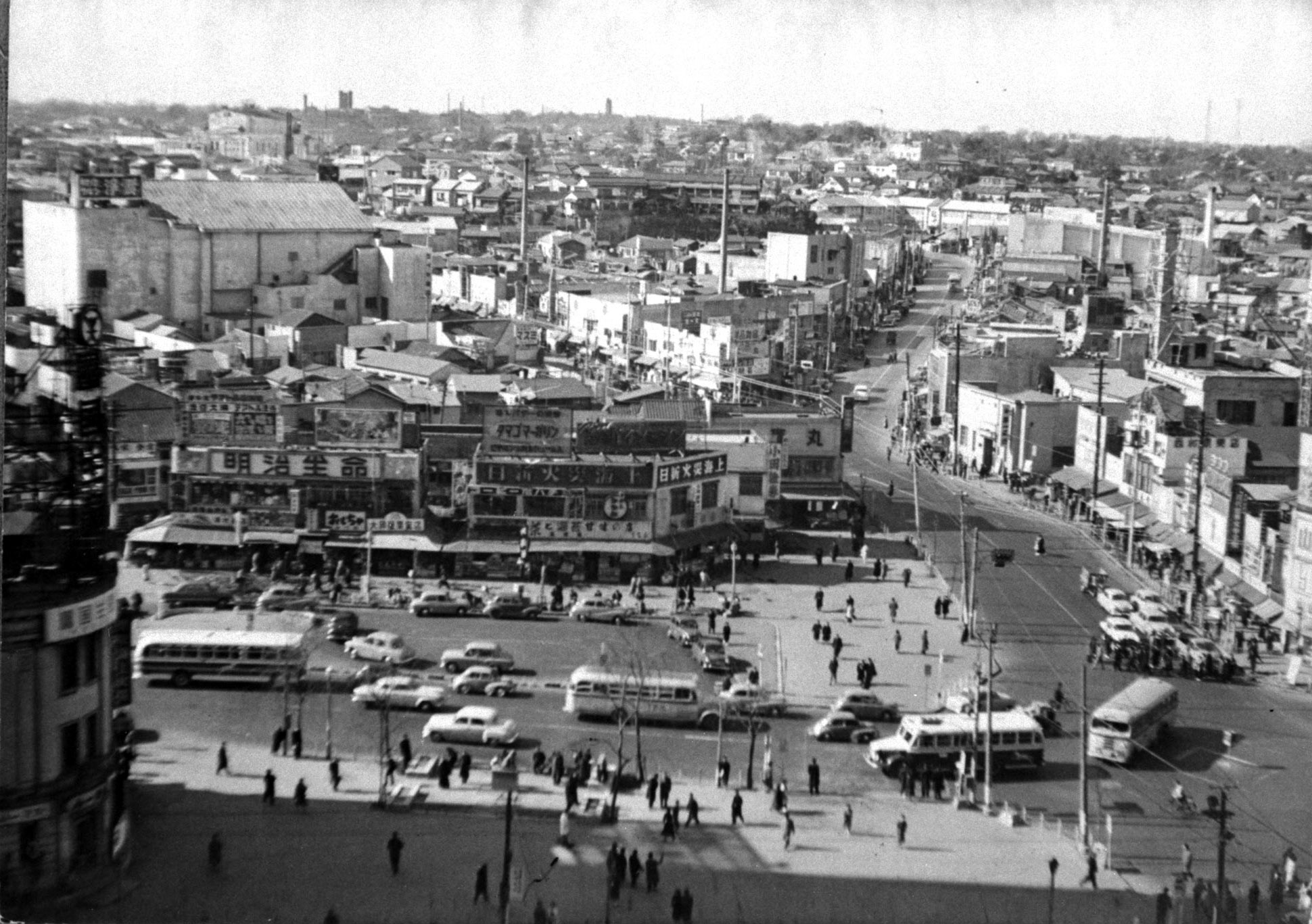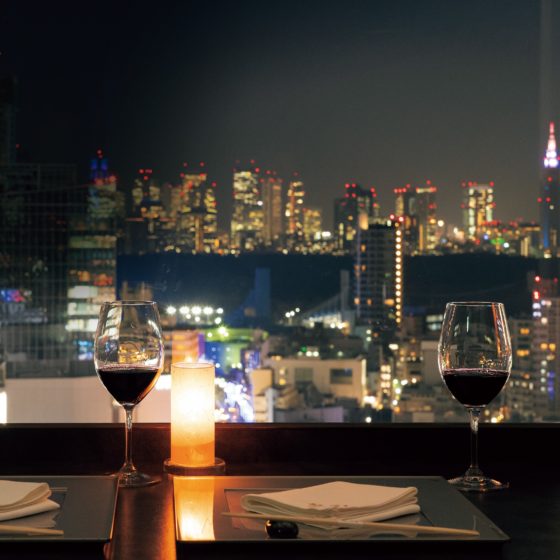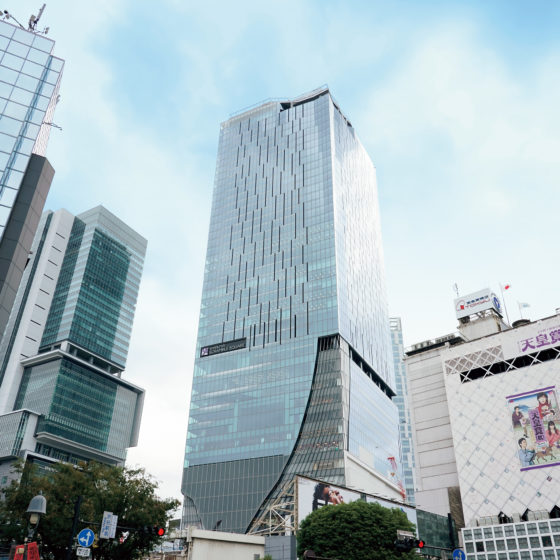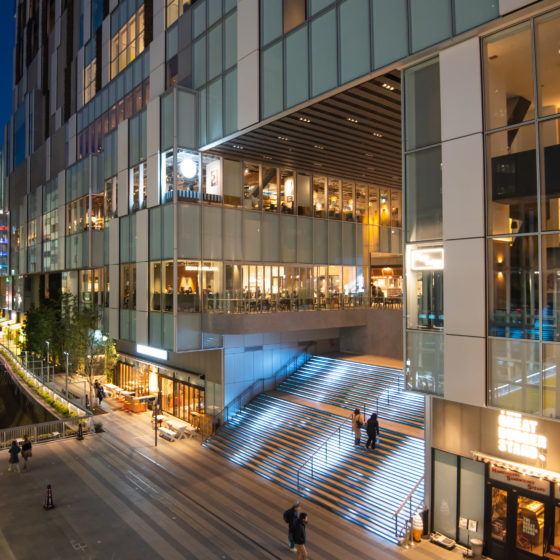- In an open area by Shibuya-Crossing is a beloved and renowned bronze statue of a dog, Hachiko. It’s a popular meeting place for everyone who comes to Shibuya. The space around the Hachiko statue is always busy with crowd of people. Hachiko the dog actually existed and became famous when he waited outside Shibuya Station everyday after the faithful canine’s master died. He’s an Akita breed, one that recently hit the headlines when an Akita puppy was sent to Russian figure skater Alina Zagitova. The story of how Hachiko came to greet his master at Shibuya Station became famous when it was made into the 1988 movie Hachi-ko Monogatari(Tale of Hachiko) that won best script at the Japan Academy Awards. In 2009, the movie was remade as anAmerican film starring Richard Gere, Hachi: A Dog’s Tale, and was a hit across Japan that same year.
- There’s always a long queue of people waiting to have fun taking souvenir photos in front of Hachiko. The statue and Shibya Crossing are the two most popular places for souvenir snapshots here.
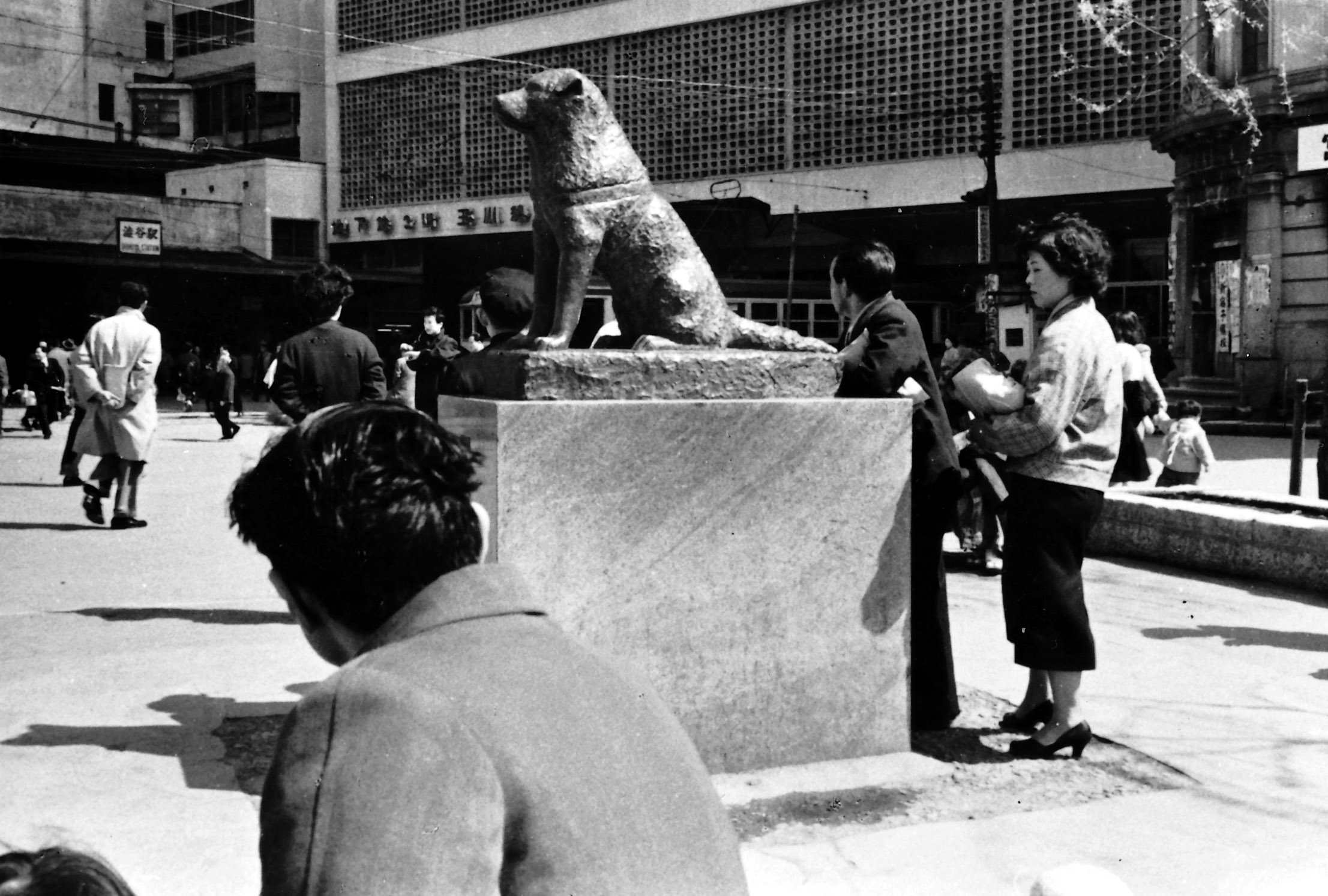
picture_1 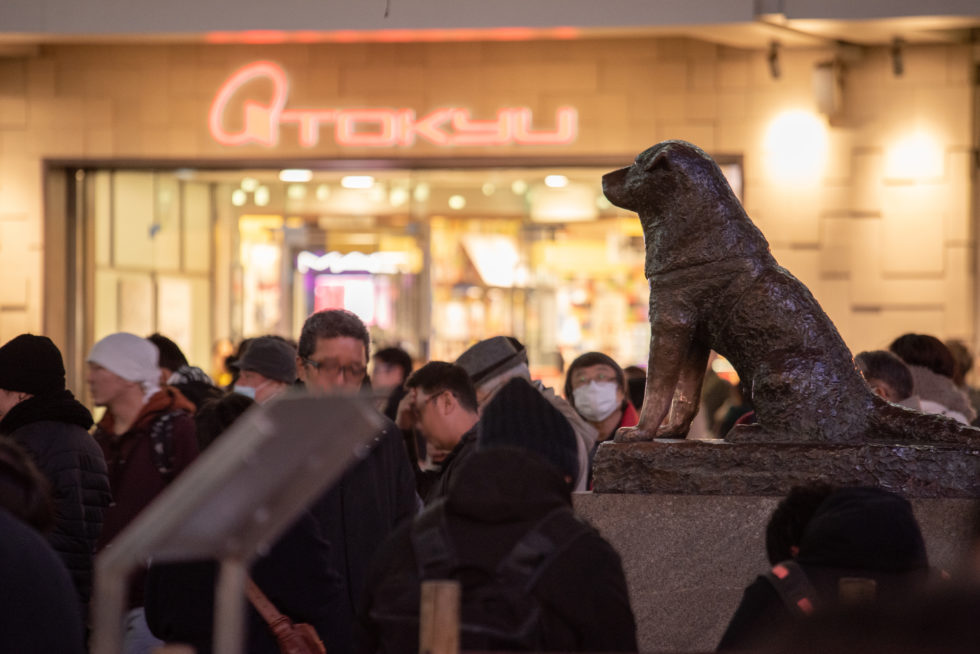
picture_2
There were no high-rises in or around Hachiko Square, circa 1953 (main picture). Note the area of the statue of Hachiko circa 1955 (picture_1)and at present (picture_2).
- While Shibuya is now a busy urban area to rank with Shinjuku, it was only redeveloped during the Showa period (1926 -1989), as it grew rapidly.
- When the real Hachiko waited outside Shibuya Station, the area was a country settlement hard to imagine today.
- During the Edo period (1603-1867), Shibuya was a rural agricultural village. But by the Meiji (1868-1912) and Taisho periods (1912 -1926), agriculture had declined while urbanization and industrialization had begun. New railway lines were built, one after the other, during the 1930s and the Toyoko Hyakkaten (now Tokyu Department Store) opened for business in front of the station.
- Although the district was impoverished by WW2, the 1964 Tokyo Olympics were the big spur for its postwar development. The American Occupation military facilities, known as Washington Heights, were returned to Japan the year prior to the Olympics, and the area was reborn as key Olympic facilities like the National Stadium and Olympic Village. In preparation for the Tokyo Olympics, the road network was extended, new highways constructed, and other urban infrastructure improved, radically changing Shibuya’s appearance into what you see today.



